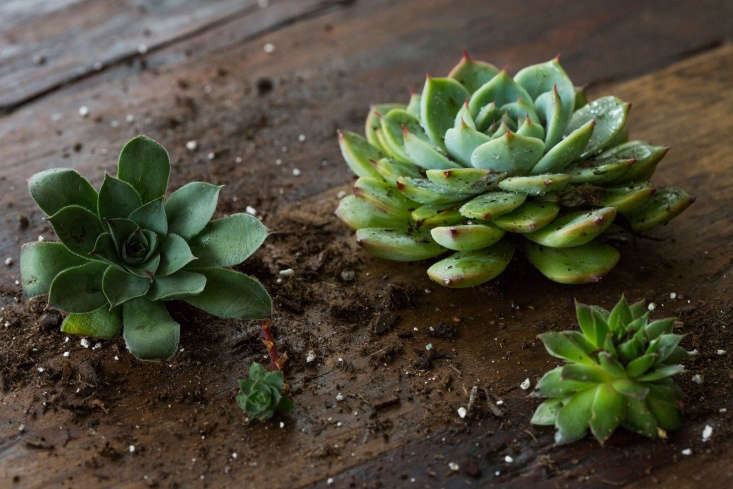Sempervivums, which are a type of succulents, are the topic today as we continue on our mission to keep our succulents alive and happy indoors and out.
The first step to taking good care of a houseplant is to identify it—and in our previous installment of our Succulents Explained series, we vowed to go beyond the vague and mysterious plant tags (“Succulent, Assorted”) that shops stick in plastic nursery pots. We can do better than that.
In Succulents Explained, we started by delving into three subfamilies of the Crassulaceae plant family (Crassulas, Kalanchoes, and Sedums). Today we’re diving even deeper—with a look at succulents that belong to the Sempervivum genus of Crassulas. You may have a few lurking in your houseplant collection without even knowing it. Here’s how to tell.
Photography by Mimi Giboin for Gardenista.
How to Identify a Sempervivum

Sempervivums belong to the Crassula genus, a group of succulents which has hundreds of species (including its most famous representative, the jade plant). It’s tricky to identify a Crassula just by looking at it; with so many cultivars, size can range from tiny to tree-like, leaves can be pointed or rounded, and growing habit can range from creeping to branching.
Sempervivums, however, are among the easiest Crassulas to identify because they tend to grow in tight, low clumps and are shaped like rosettes. Read on for more clues.
Is Your Succulent a Sempervivum?

If your succulent is a sempervivum, it has:
- Fleshy leaves, which may look either glossy or matte.
- A rosette shape.
- A tendency to form clumps.
- Tiny, independent offsets that can be snipped off and rooted.
- The ability to survive frosts.
How to Grow Sempervivums Indoors

What a sempervivum needs to survive as a houseplant:
- Well-drained soil.
- Water once a month.
- Bright, indirect light.
- Cactus mix potting soil.
How to Grow Sempervivums in a Garden

What makes your sempervivum happy in the garden:
- An annual temperature range that falls within USDA growing zones 3 and 11.
- Well-drained soil.
- Sun or shade.
- Rocky, gravelly, or sandy soil (a sempervivum is a good choice in rock gardens).
- Little or no artificial irrigation.
Sempervivum or Echeveria?

Although echeverias and sempervivums share similar characteristics (including their rosette shapes), there are some key differences.
How to tell if you have a sempervivum or an echeveria:
- Echeverias have plumper leaves than sempervivums, so their rosette shape is not as tight.
- Echeverias hail from warmer climates and cannot survive cold temperatures outdoors. Sempervivums are native to Europe and can be used as perennial ground covers in temperate climates (USDA growing zones 3 to 11).
- Echeverias’ offsets (also known as chicks) grow beneath the leaves of the parent plant, while sempervivums rosettes sprout farther away.
- When flowering, echeverias have long, slim stems topped by blooms. With sempervivums, on the other hand, the entire rosette grows upward and produces a cluster of small flowers on top. After flowering, the entire stalk dies.

Stay tuned…we’ll be covering more types of succulents in our Succulents Explained series. Next month we’ll have a post on Graptosedums.
In the meantime, we’ve got succulents covered. See more tips, tricks, and the occasional love poem devoted to our favorite succulents:
- Succulents & Cacti 101: A Field Guide to Growing, Care & Design
- Succulents: 8 Tips to Help Your Favorite Indoor Plants Survive Winter
- 11 Ways to Keep Houseplants Happy in Winter
- Required Reading: Success with Succulents
- Echeverias 101: A Field Guide to Growing, Care & Design
- Houseplants 101: A Primer








Have a Question or Comment About This Post?
Join the conversation